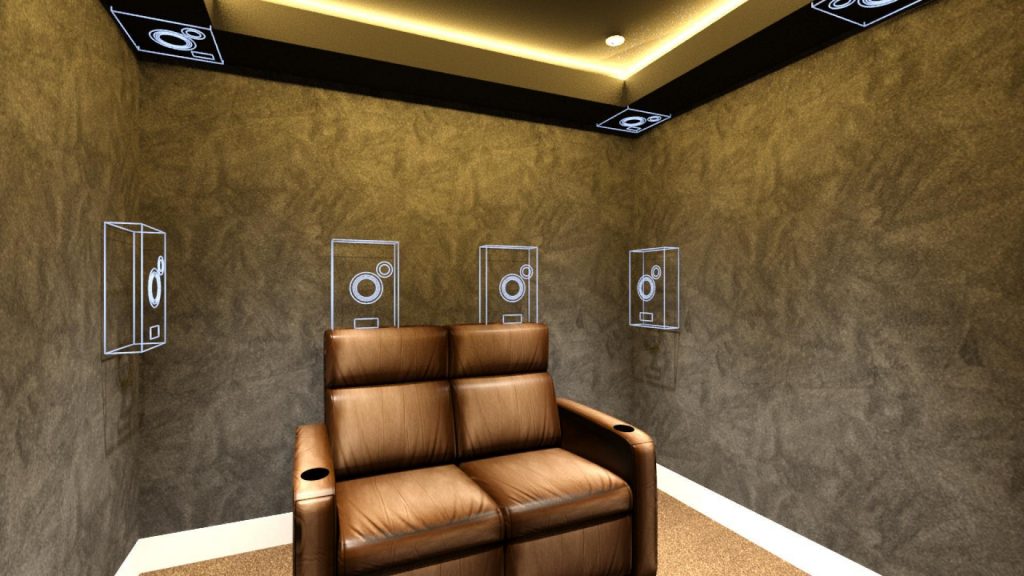You would naturally want your home cinema to provide the very best experience possible. One of the early questions our clients often ask us is how big should a home cinema room be. In this article, Guy Singleton explores some of the factors that will affect performance relative to the size of the room.
Guy Singleton MIET LCGI MInstLM (our principal engineer) is a fully qualified and registered electrical and electronics engineer. He teaches and lectures internationally and is a subject matter expert for CEDIA’s education council, specialising in lighting, HVAC, home theatre design, fundamental electrical theories, electrical maths and control systems and programming. Guy has been at the helm of Imagine This for over 25 years and he is the inventor and owner of The Cinema Designer software.
How Big Should a Home Cinema Room Be – Does Size Really Count?
Our clients often ask us very early in the project process, “How big should a home cinema room be?” Frequently it is the conversation starter. More often than not, our client will have earmarked space for a home cinema room and are interested in whether it is big enough.
The true answer is Yes! Your room is probably big enough. Whilst we’ve built home cinemas in some truly huge spaces, equally, we’ve delivered rooms in several very modest spaces. For example, we are just putting the finishing touches to a room that is approximately 10ft x 10ft. It was a challenge, but we thrive on engineering conundrums and so it was one we relished. The final result is a totally immersive, intimate room where you can lose yourself in the big screen experience.

Small Home Cinema Room
Smaller rooms will inevitably bring design compromises. For example, having seating pushed up to the boundary or back wall isn’t ideal. Bass management and low-frequency predictability in small spaces require a good deal of design skill. By utilising multiple subwoofers, and clever calibration, coupled with correctly specified and placed room treatment, we can resolve those bass issues. Acoustics in small rooms is a challenge for the uninitiated; there is no denying that. But when you get it right, smaller intimate home cinema rooms can be so rewarding.
Smaller Rooms vs Larger Home Cinema Rooms
You’d be surprised by the rooms we have converted into a home cinema. Garage loft spaces and rooms above garages, loft conversions, basements, unused dining rooms and even the odd garden room thrown in. So, if you have a space of about 10ft x 10ft that isn’t working very hard for you, then please give us a call. It doesn’t have to cost a lot and you’ll be amazed at what real performance looks and sounds like.
Cinema should make you forget you are sitting in a theatre.
Roman Polanski
What I would say is that larger rooms tend to be (and I say this with some trepidation) more expensive. The seating position is further from the speakers and the screen, the size of the walls requires more acoustic treatment and there tend to be more seats. Generating the required SPL (sound pressure levels) at the listening position in really large rooms comes with its own issues. Those performance objectives are more demanding and tangibly more expensive to hit, so smaller rooms somewhat alleviate that issue.
If you have a small room in your home that you think may be suitable for a family theatre, please get in touch. It may prove to be the best call you’ve made in a while. We can because we are…Imagine This.

In Conclusion
So, how big should a home cinema room be? Over the years our team have created some of the most acclaimed home cinemas in the industry. In fact, we are synonymous with designing and delivering fabulous rooms. We always deliver the very best designed and engineered solution, whatever the size of the room or budget. Small rooms are more difficult to get right acoustically and from a bass perspective, but when you do, they’re really great! We have created some exceptional spaces, and, while they may be small in size, they are voluminous in performance!
We are fastidious with our design, exacting in delivery and attentive with our aftercare!


Further Reading
For further reading, here is our Grey Matter project, and here is a modest Media Room. For a technical read, here is Guy’s article on Dialogue and Speech Intelligibility or here is Dynamic Range and Noise Floor.
(Additionally, if there is a topic you would like us to address in our news articles, please let us know using the contact form below.)

